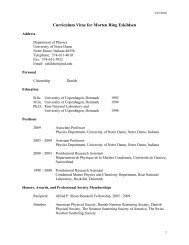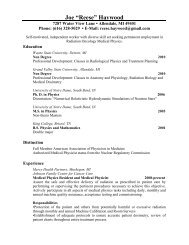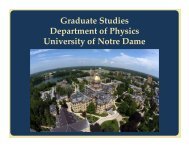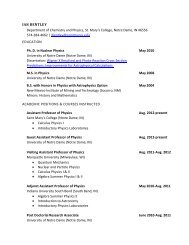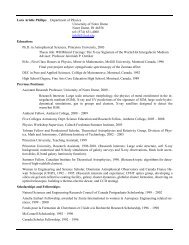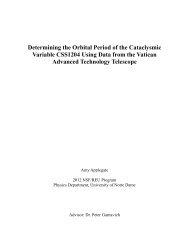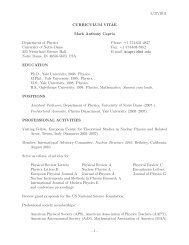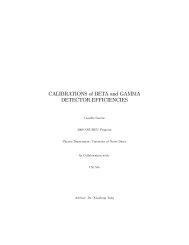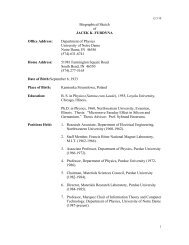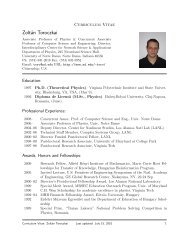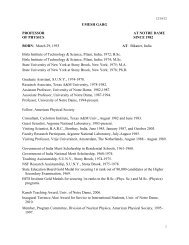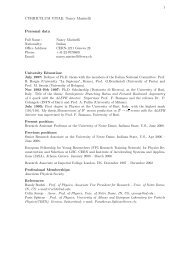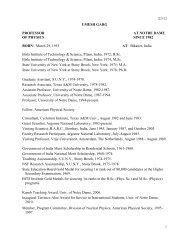Magnetic Properties of La0.7Sr0.3Mn1-xNixO3 Perovskites - Physics ...
Magnetic Properties of La0.7Sr0.3Mn1-xNixO3 Perovskites - Physics ...
Magnetic Properties of La0.7Sr0.3Mn1-xNixO3 Perovskites - Physics ...
Create successful ePaper yourself
Turn your PDF publications into a flip-book with our unique Google optimized e-Paper software.
χ p=C /Twhere C is is the Curie constant. If we substitute this into the previous equation, we getMT=C (B A+λM )and rearranging the variables we can simplify it toχ=M / B a=C /(T − Cλ)We see that the denominator is zero when T=Cλ, in the above equation. At that temperature and below,the magnetization is spontaneous, and because <strong>of</strong> that we can have a finite magnetization for B a =0.From this we get the Curie-Weiss Lawχ=C /(T − T C ) ;T C=Cλwhich describes the susceptibility variation in the paramagnetic region above the Curie point.With this information we can define λ to beλ=T C/C1.3 AntiferromagnetismAntiferromagnetism is like ferromagnetism where instead the magnetic moments line up antiparallelto each other.If we begin by assuming separate Curie constants C A and C B for ions at two different sites A andB, we will have two interactions as B A =-μM B and B B =-μM A ; μ is a positive mean field constant. Withthe mean field approximation we would haveM AT=C A (B a− μM A )M BT=C B (B a− μM A )here, the B a is the applied field. We solve this system <strong>of</strong> equations using a matrix, by assuming theapplied field is zero. The susceptibility to at T>T Cχ= ( M A +M B )B a= [( C A +C B )T − 2μC A C B](T 2 − T C2 )Now, for an antiferromagnetic limit we have C A =C B . Antiferromagnetism occurs below the



